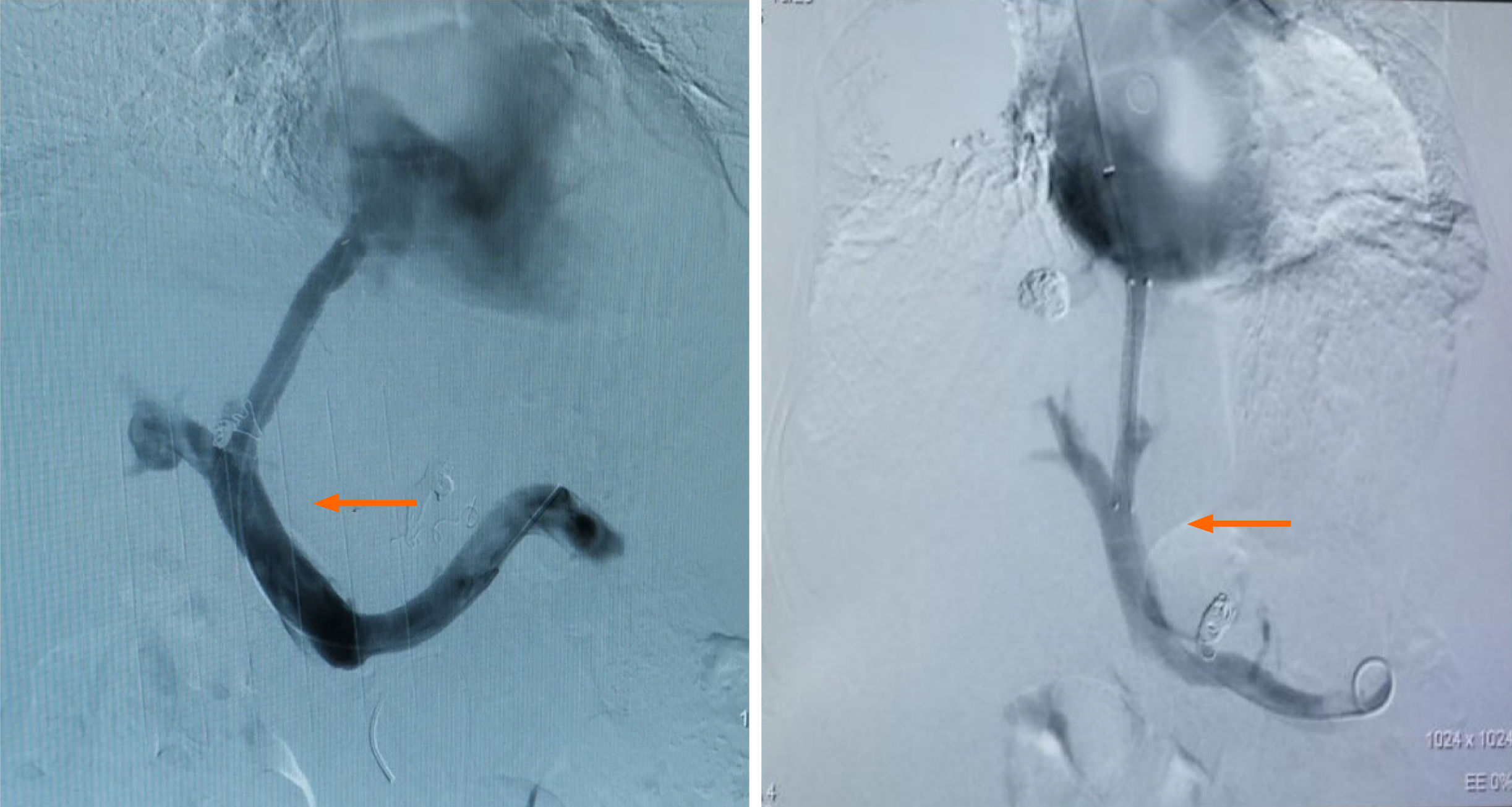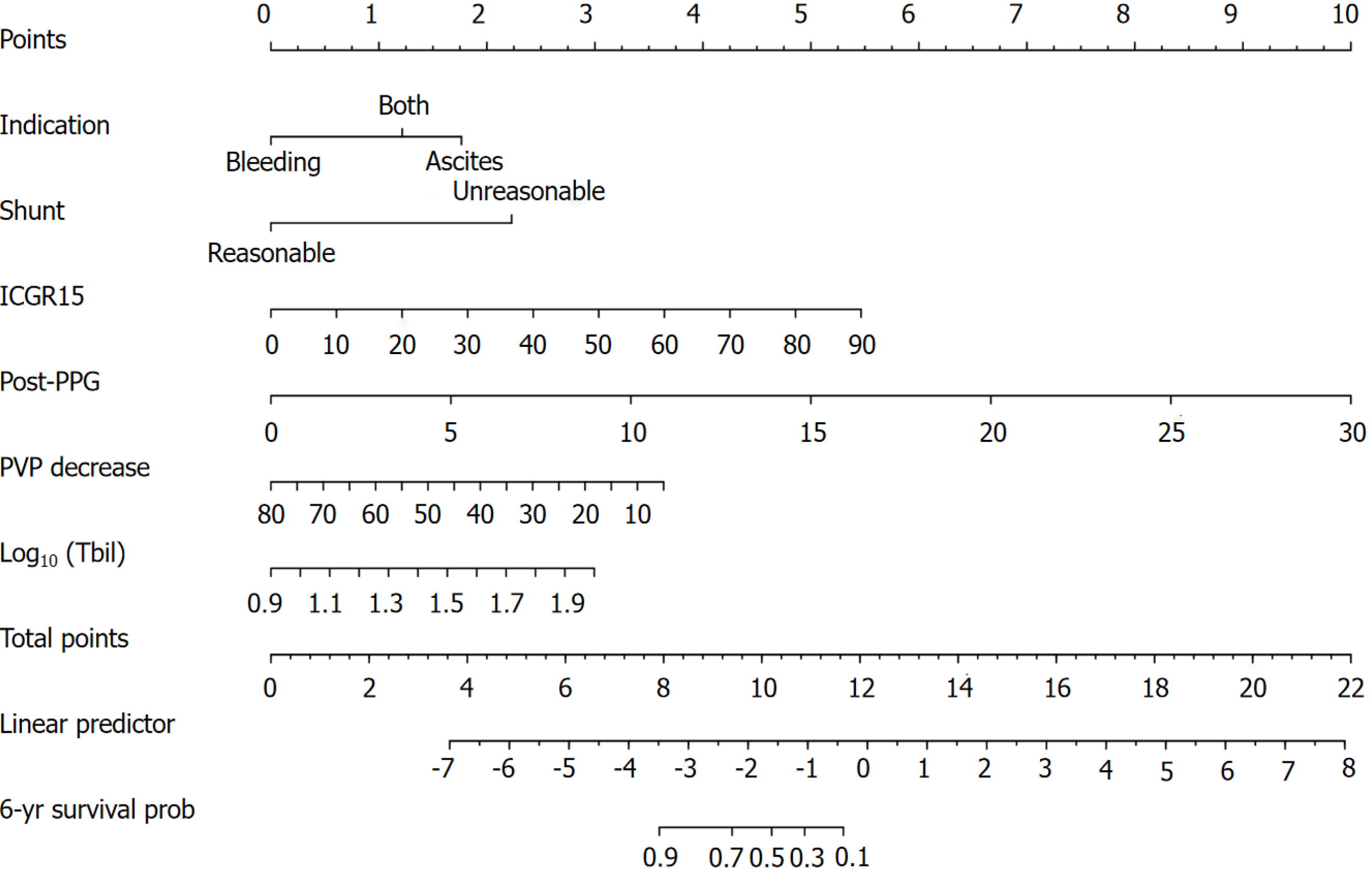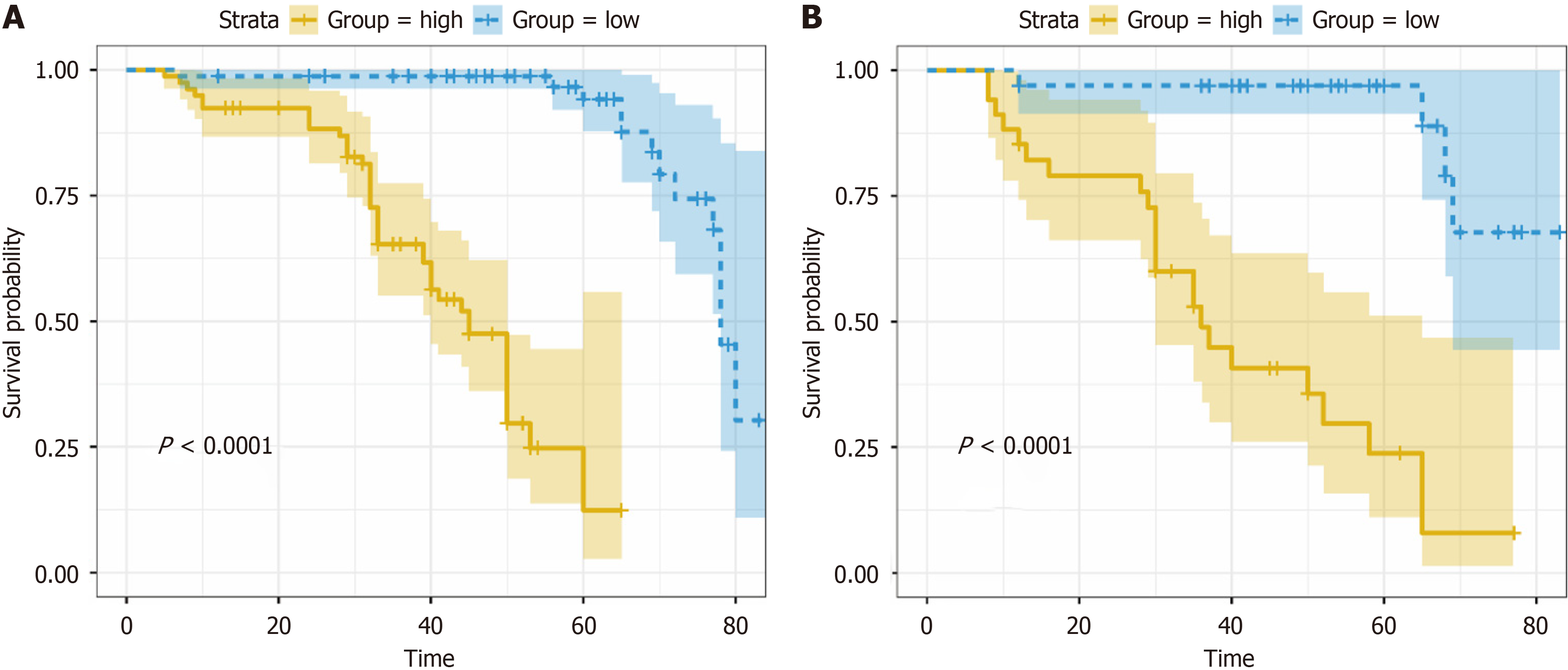Copyright
©The Author(s) 2024.
World J Gastrointest Surg. Feb 27, 2024; 16(2): 491-502
Published online Feb 27, 2024. doi: 10.4240/wjgs.v16.i2.491
Published online Feb 27, 2024. doi: 10.4240/wjgs.v16.i2.491
Figure 1 Flow chart of patient inclusion and allocation.
TIPS: Transjugular intrahepatic portosystemic shunt; HCC: Hepatocellular carcinoma.
Figure 2 Reasonable shunts, indicated by orange arrows.
Figure 3 Nomogram of the newly developed Cox model for predicting 6-year survival after transjugular intrahepatic portosystemic shunt implantation in patients with hepatitis cirrhosis.
ICGR15: Indocyanine green retention rate at 15 min; PVP: Portal venous pressure; Tbil: Total bilirubin.
Figure 4 Six-year receiver operating characteristic curves of different models.
A: The training set; B: The validation set. NDC: Newly developed Cox; MELD: Model for end-stage liver disease; FIPS: Freiburg index of post-transjugular intrahepatic portosystemic shunt survival.
Figure 5 Calibration plots for the actual and predicted probabilities of the nomograms predicting 6-year survival after transjugular intrahepatic portosystemic shunt.
A: The training cohort; B: The validation cohort.
Figure 6 Kaplan-Meier survival plot of overall survival after transjugular intrahepatic portosystemic shunt in patients with hepatitis cirrhosis, stratified according to the newly developed Cox risk groups.
A: The training set; B: The validation set.
- Citation: Lv YF, Zhu B, Meng MM, Wu YF, Dong CB, Zhang Y, Liu BW, You SL, Lv S, Yang YP, Liu FQ. Development of a new Cox model for predicting long-term survival in hepatitis cirrhosis patients underwent transjugular intrahepatic portosystemic shunts. World J Gastrointest Surg 2024; 16(2): 491-502
- URL: https://www.wjgnet.com/1948-9366/full/v16/i2/491.htm
- DOI: https://dx.doi.org/10.4240/wjgs.v16.i2.491














